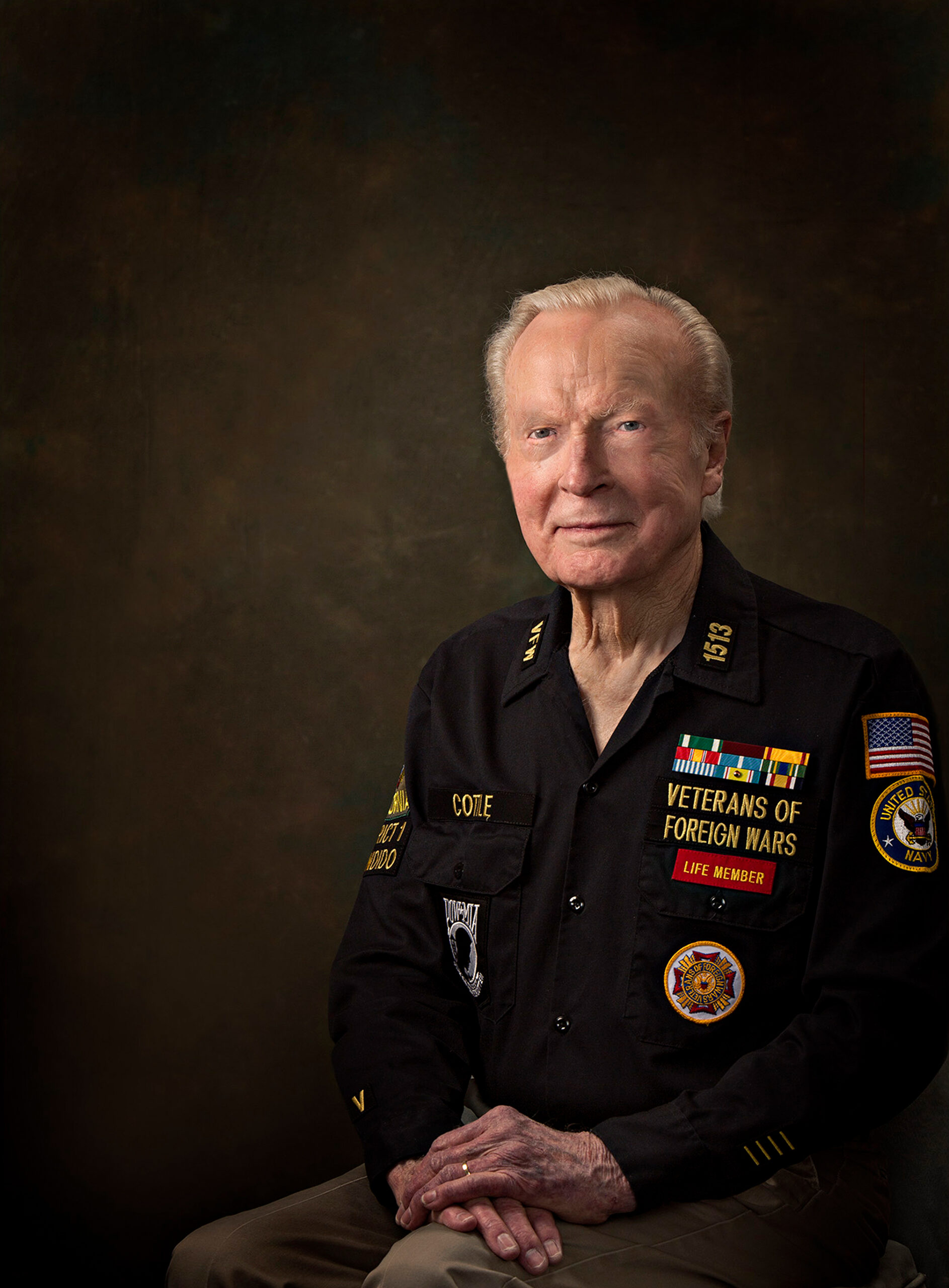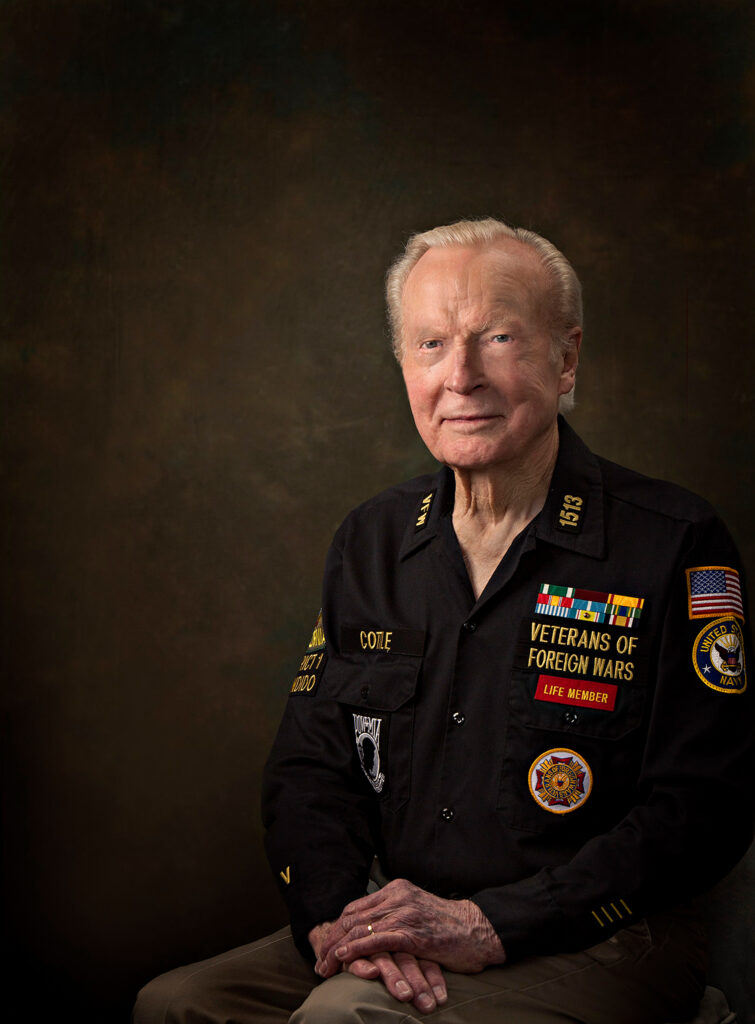
Donald R. Cottle
Check back to view Donald’s video interview by Vision of Vets!
Written by Sue Tone
Two weeks after Don Cottle graduated high school, the Korean War began, and soon he and his friends enlisted. “I wanted to travel and work, so I joined the Navy,” the Southern California resident said.
Photography was a hobby and that became Cottle’s work during the four years of his service (1951-1955), including taking photographs during Operation Ivy on Enewetak Atoll in the Marshall Islands. He received top secret security and was told to never speak about what he witnessed. However, 10 years after documenting what was the United States’ first hydrogen bomb test, the government released a film about the event to the public.
“Our ship was about 30 miles from ground zero. The bomb was assembled on the island because it was too large and heavy to be dropped from an airplane,” Cottle said.
The devastating capacity of this particular hydrogen bomb was about 700 times greater than the atomic bomb the U.S. dropped on Hiroshima. The liquid deuterium core was kept cooled at -424 degrees to allow fusion to take place, and was given a 50% chance of success. Cottle said he wasn’t sure what would happen when the blast occurred.
“My heart was pounding. I was terrified. There was an instantaneous flash that was very intense even with the thick dark goggles they issued to us. It was so bright it hurt your eyes, and the heat was almost instantaneous. The sound wave came a couple minutes later,” he said.
The mushroom cloud rose to 135,000 feet (25 miles) with the stem expanding to 20 miles wide. The island disappeared, leaving a crater 6,240 feet wide and 164 feet deep. All animal and plant life on the surrounding islands were decimated. The horrifying effects of such a destructive power left an impact on Cottle, now 91, for the rest of his life.
Sixty experiments took place during Operation Ivy involving 11,000 employees, including photographers from Los Alamos National Laboratory who developed Cottle’s film. “I was never allowed to see the photographs I took because that was beyond my level of security clearance.”
Don Cottle’s 2.5-minute video will soon join other veterans’ stories. His daughter, Corinne Harmon of Prescott, conducted the interview.

